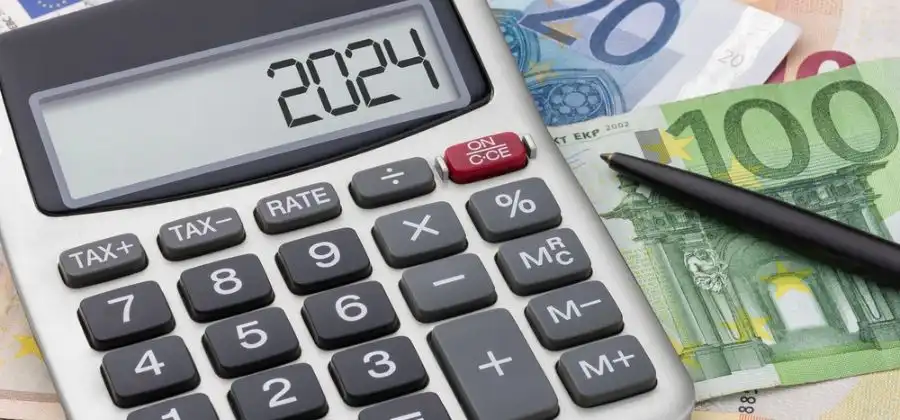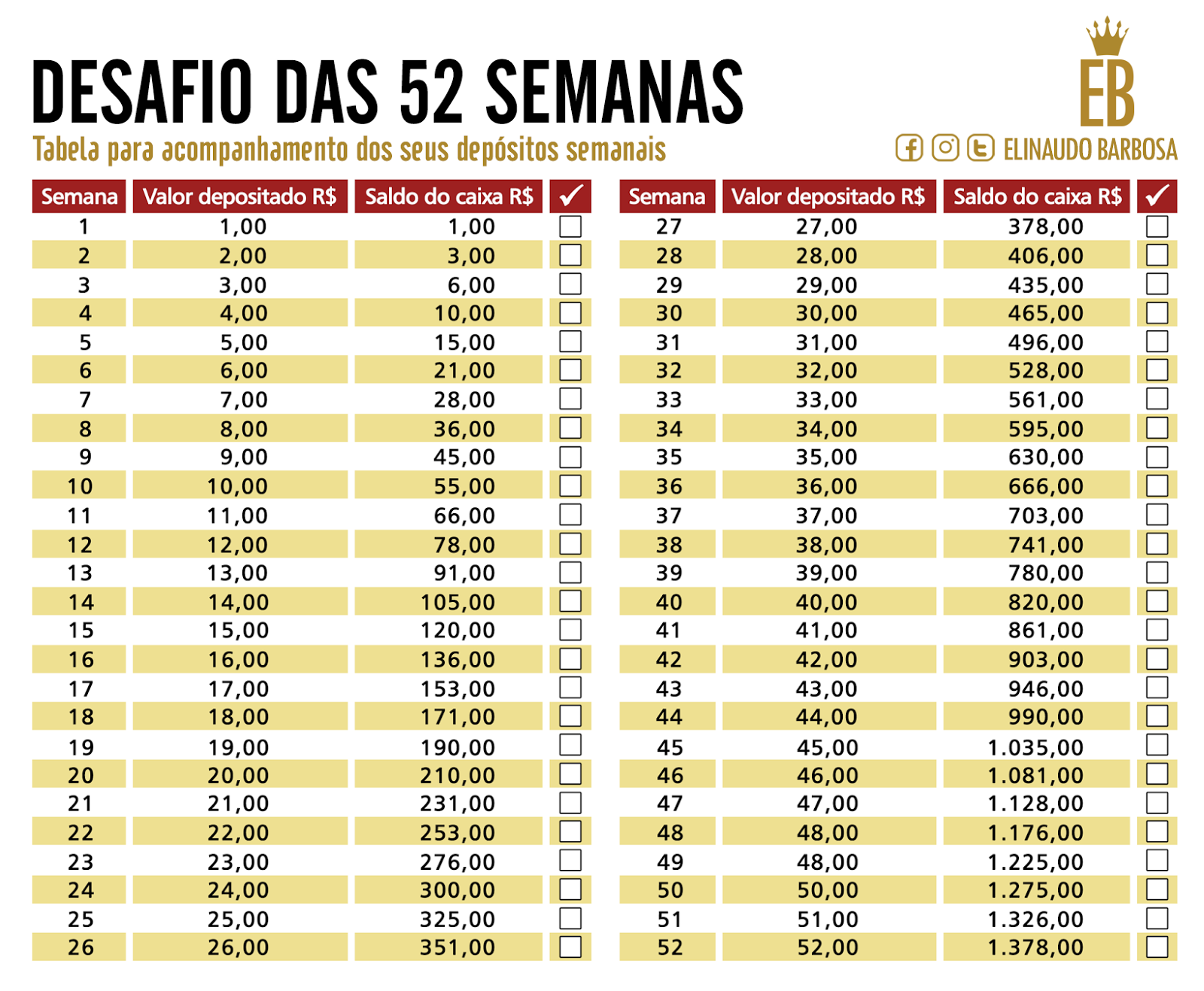
Save over 1,300 euros per year? Try the 52 weeks strategy.
Do you need to save money in 2024 for a larger margin in your monthly family budget, or for a future project? There are several strategies you can use, such as the 52-week challenge. Have you heard of it? Find out how it works, next.
If you have credits and insurances, you can also try to review the contract conditions with the contracting entities. Contact Poupança no Minuto and, with the free help of a credit intermediary, find out which options are right for you. But first, understand what the 52-week strategy is and how to apply it.
How to apply the 52-week savings strategy?
Want to start the year by putting some money aside, without noticing the impact on your wallet? The 52-week strategy is ideal for this goal: it helps you save a certain amount each week of the year, which increases and annually becomes a meaningful amount. So, if you want to start saving for a future project, to pay off credits, or for more budget flexibility, take a look at the process of this strategy.
This challenge involves little difficulty, which, however, increases throughout the months of the year. This is because, the amount you set aside increases from week to week. It can be a good habit to develop in order to achieve financial discipline.
The strategy didn't need to be exactly followed. As long as a portion of monthly earnings is saved each week from January to December, the challenge of the 52 weeks is applied. This is the number of weeks in a year.
As a rule, you withdraw 1 euro in January, 2 euros in February, 3 euros in March, and so on. If you complete this challenge with this strategy, you end the year saving an exact cumulative amount of 1,378 euros.
If you notice, it's not a very complicated strategy to follow, since the maximum you have to set aside is 52 euros in the last week of the year. Therefore, it's not a challenging amount, but it enables you to save an impactful amount by the end of a complete year.

What challenges may I encounter?
The biggest challenge you may encounter is to remember to set aside the stipulated amount for that period weekly, which will require attention and dedication on your part. For that, you can set a reminder on your mobile phone, so you don't forget. To make it easier, you can even add up the amount of the weeks to the month, and set it aside monthly.
In other words, in the first 4 weeks, the amount to set aside will be: 1st week - 1 euro, 2nd week - 2 euros, 3rd week - 3 euros, and 4th week - 4 euros, totaling 10 euros in the first month.
Another issue that may arise is where to put the saved money: it should be in a safe place and harder to access, to avoid the temptation of withdrawing the money before its time. Some ideas may include simply putting it in a savings account or in another separate bank account, then you can invest it by putting the amount into a retirement savings plan (PPR), or in savings certificates, or (in the old-fashioned way) withdraw the money and put it in a safe, piggy bank, or even under the mattress.
So that you can find this savings and set it aside, you can choose to revisit contracts for credits and/or insurance. To do so, go to your bank and see if it is possible to renegotiate the conditions of the products. If the new conditions presented do not satisfy you, you can always transfer the product to a new entity. For this, you can count on the free help of a credit intermediary from Poupança no Minuto, who can present you with new proposals with more advantageous conditions than the ones you have now!
Contact us to help you, completely free of charge, lower the installments of your contract and ensure new savings for your next project!